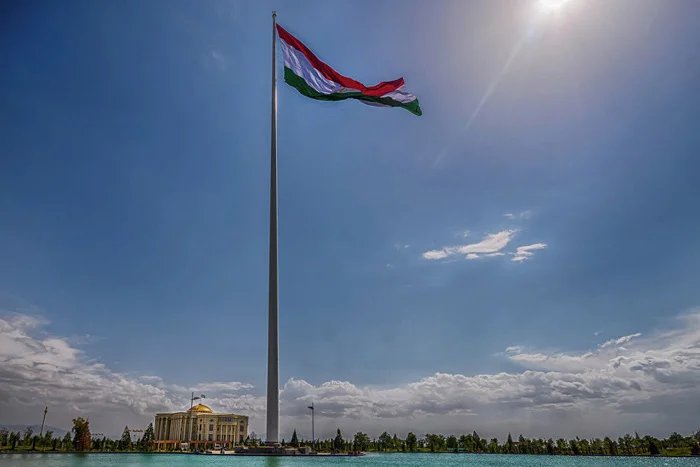Tajikistan is celebrating a National Flag Day today. Celebrations to mark a National Flag Day are taking place across the whole country. No mass events are foreseen on this occasion.
President Emomali Rahmon today congratulated Tajikistanis on the occasion of the National Flag Day.
In his message, the leader of the country, in particular, noted that the national flag is a symbol of the Tajik people in the international arena.
“The national flag was adopted on November 24, 1992 at the 16th historic session of the Shuroil Oli (Supreme Council) as the first state symbol of the independence of Tajiks.”
On the occasion of the National Flag Day, the Dushanbe Administration has called on residents to hoist national flag over their houses.
Recall, Tajikistan has celebrated the National Flag Day since 2009. A 1501-meter-long Tajik flag was hung over the Roudaki Avenue, from the former President’s Palace (intersection of Roudaki and Ismoili Somoni avenues) to the Dousti Square. The flag, 1501 meters in length and 7 meters in breadth, had reportedly been made in Dushanbe’s workshops in one night. Besides, some 300 students marched through Dushanbe's main street with a 90-meter-long Tajik flag to celebrate the holiday.
Residents of Dushanbe were witnesses of the national flag of Tajikistan rising to the top of a 165-meter flagpole on May 24, 2011. The flag is 1,800 square meters, measuring 60 by 30 meters.
The flagpole has been designed and installed by Trident Support, based in San Diego.
The flagpole consists of 12-metre sections of steel tube fitted together by crane. The design phase for the flagpole began in July 2009. Fabrication of the pole's sections was completed in Dubai in October 2010. The sections were then shipped to Dushanbe, where construction of the flagpole began on November 24, 2010, Tajikistan's National Flag Day. The final assembly and erection took place during April and May 2011.
The flagpole reportedly cost 3.5 million U.S. dollars and was part of 210 million USD worth of projects celebrating the 20th anniversary of Tajikistan independence.
Tajikistan was the last of the former Soviet republics to reveal a new flag, which was adopted on November 24, 1992. The one common link between this and the 1953 Tajik SSR flag is the choice of colors – red, white and green.
The flag of Tajikistan is a tricolor of red, white, and green. The red represents the unity of the nation as well as victory and sunrise. The white represents purity, morality, the snow and ice of the mountains, and cotton. The green represents the bountiful generosity of nature, fertile valleys, the religion of Islam, and the celebration of Novrouz.
Other interpretations of the colors state that the flag symbolically unifies the people of Tajik society, with the red stripe representing the manual labor class, the white stripe representing the intellectual worker class, and the green representing the agricultural class living in Tajikistan's rural or mountainous regions.
While the red and green stripes on the top and bottom are equal in size, the center stripe is one-and-a-half times that of the others.
The crown and stars are set in a rectangle taking up 80% of the white stripe's height. The crown represents the Samanid dynasty and Tajik people, as the name Tajik is connected with Persian tâj "crown" in popular etymology. The flag of Tajikistan features seven stars due to the significance of the number seven in Tajik traditional legends, representing perfection and happiness. According to traditional belief, the heavens feature seven mountains and seven orchard gardens with a star shining above each mountain.




